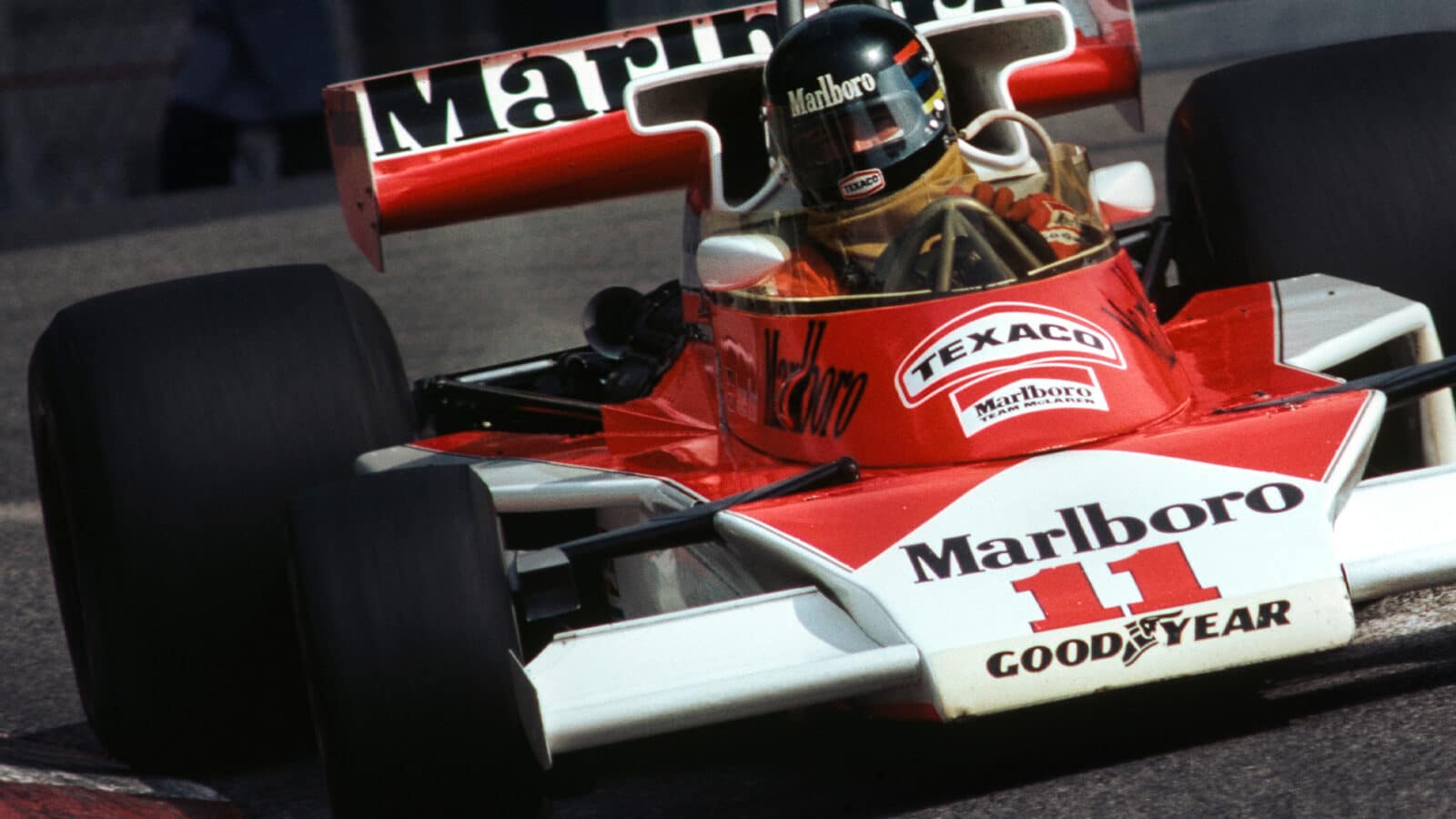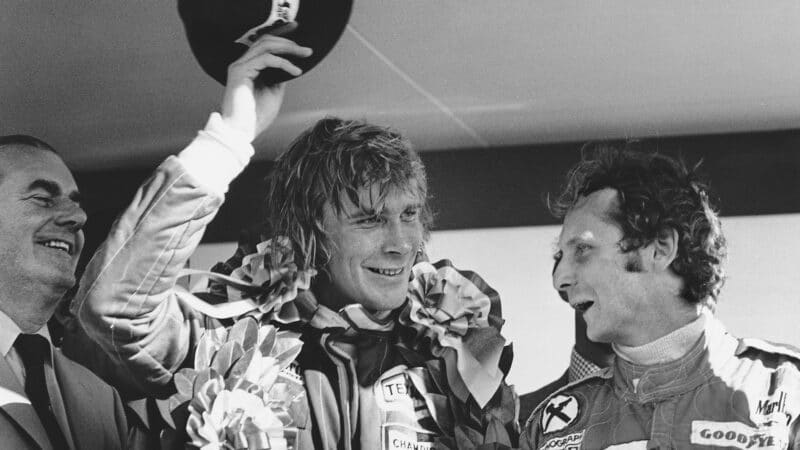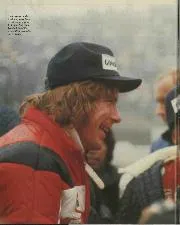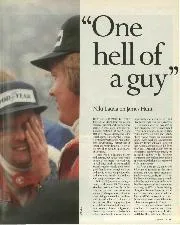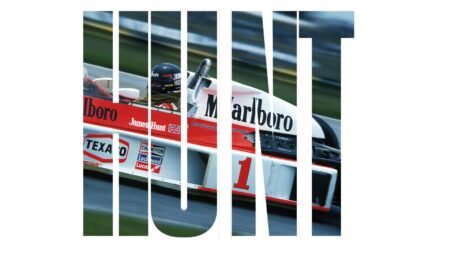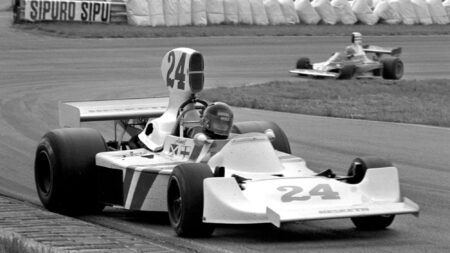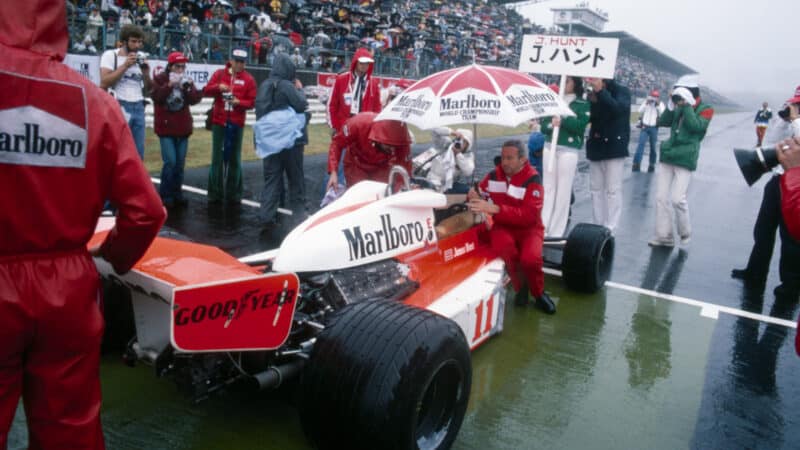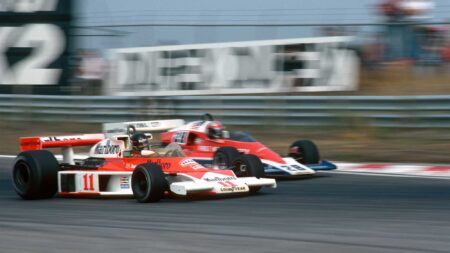“It was an interesting year,” says Caldwell, “and we’d had the abdication of Fittipaldi, which meant a ragged end to the previous season. We were still testing with Emerson, but he kept telling me he had another job to go to. I don’t think anyone else believed him, but Emerson was a businessman first and foremost and wanted a big salary rise for ’76, which Teddy Mayer didn’t want to pay. This went on until nearly Christmas, when suddenly the shit hit the fan. Emerson announced his new Copersucar team and off he went. Philip Morris, our sponsor, was a bit surprised by this, to say the least. Anyway, with about a month to go before the first race we didn’t have a driver. At the same time Lady Hesketh had pulled the plug on her son’s racing team and so Hunt was out of work. He rang up and said ‘I guess I’m your new driver’, so we replied ‘Well, we guess you are’. That’s how it happened. We told him we weren’t going to pay him anything – after all, he was out of work and we had the second best seat in Grand Prix racing. So we paid him a pittance and off we went.”
Time was tight, the learning curve steep and there was no time to feel their way into a new season.
“Testing bored him to tears and we really shouldn’t have used him at all”
“We didn’t know if he was quick,” says Caldwell. “ We knew he’d had a lucky win at Zandvoort with Hesketh, and we’d seen him racing, but you don’t know about drivers until you get them in your car. We thought the whole Hesketh thing, including James, was a bit foolish and foppish and he would not have been our first choice, not our style of driver at all.
“Anyway, we were stuck with him and took him off to Silverstone to see what he could do. First impressions? He was odd physically, with those long legs, and he was hunched, a bit round-shouldered, with that weird shambling gait. He didn’t fit our car – that was the first problem. We had to cut the front bulkhead out then move the master cylinders forward, and he had to cut the ends of his shoes off to fit inside the monocoque. Anyway, off we went to Brazil and nobody really knew if he’d be any good or not. Poor old Jochen Mass. He wanted to know who was number one, and I told him that would be whoever was fastest. That was sorted pretty rapidly when James got pole at Interlagos and Jochen was halfway down the grid. And that’s how it stayed.”
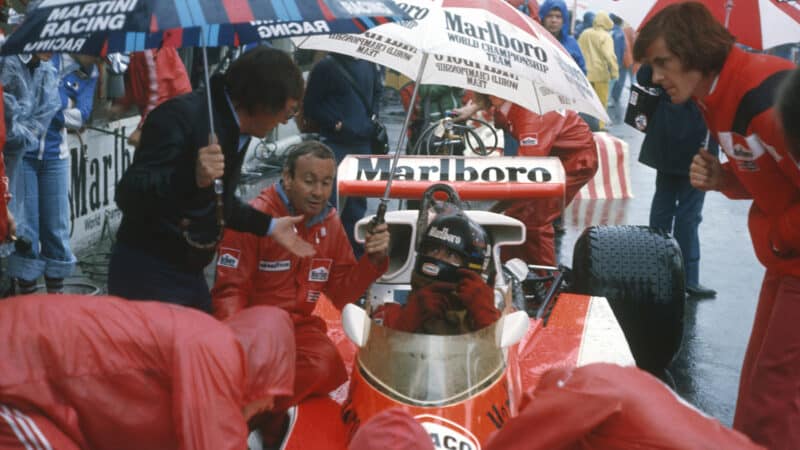
Bernie Ecclestone (with Martini umbrella), stands with Teddy Mayer, as Hunt sits in the cockpit. Caldwell is opposite
Grand Prix Photo
The M23 was three years old and needed some revisions for 1976. A new six-speed gearbox was introduced for Brazil and later in the year Caldwell hounded Texaco into brewing a new fuel for the team’s exclusive use. The drivers stopped whingeing about gear ratios and the engines stopped blowing up. Progress was being made.
“It’s cutting a long and technical story short,” says Caldwell, “but the new gearbox and fuel, with its better engine numbers, certainly helped us get on terms with Ferrari as the year went on. As well as that, we had new pistons made for the Cosworths, but Keith Duckworth wasn’t too happy – we’d forgotten to tell him – and the service contract with Nicholson forced us to go back to the old ones. Anyway, then came the Spanish fiasco.”
